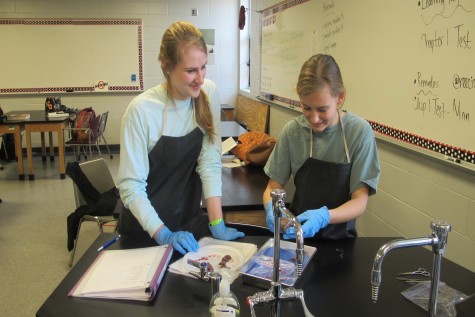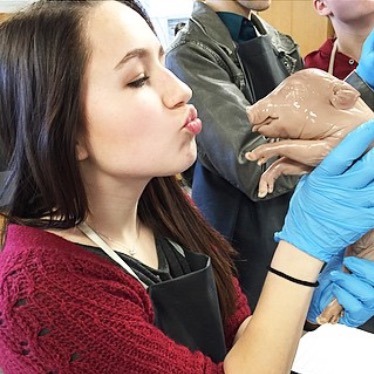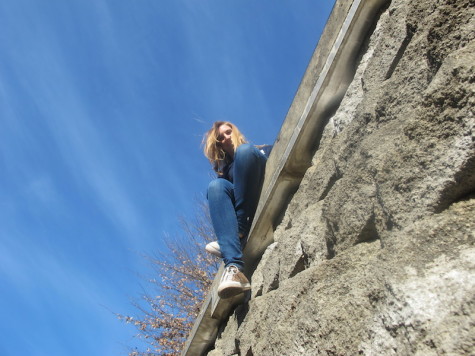This Little Piggy Got Sliced, Diced, and Sewn Back Up?
February 3, 2015

Normally, one wouldn’t associate a pig with a murder mystery.
But this is no normal class.
The unique Bob Jones Forensics class has been running smoothly for eight years now, under the watch of teacher Belinda Sewell, Forensics instructor who started the program, and Shari Windsor, Forensics instructor for the past six years. Bob Jones was one of the first Alabama high schools to offer such a course, followed by other in-state schools.
Out of eleven units, which is the most intriguing and disgusting for these students? Forensic pathology, in which students must perform an autopsy on a fetal pig.
“We’ve been doing the fetal pig autopsy for the past six years.” Sewell comments.
Unlike a dissection, an autopsy requires that students use shallow cuts in the skin, take out and weigh and measure the organs, and sew the pig back up for burial after they finish their procedure. For bonus, students can take out the brain.
So why the pig?
“The internal anatomy of the pig is very similar to the human body.” Ms. Windsor explains.
Ms. Sewell concurs. “It’s very similar to human anatomy; it’s easy to use but it’s very, very similar so that kids can see how the organs or the space is conserved; they can get a good idea of where our organs are.”
While students find the autopsy interesting and fun, others are disgusted by it. The prime, contrasting examples can be found in Forensic lab partners Natasha Kinsey and Alexi Bolton.
“I think it’s a great learning experience, and it’s really interesting to see how the fetal pig relates to the human body and the similarities and differences between them.” Kinsey states, excited.
Bolton finds it interesting as well, though she comments, “well, I think it’s safe to say forensic anthropology is not for me.”
Kinsey plans on becoming an orthopedic surgeon, but says she is also considering medical examination. Bolton wants to go into law; she took the class to get more background knowledge on criminal activity.
Kinsey remained calm and even got into the autopsy and found it incredibly intriguing.
Bolton, however, often was holding a hand up over her mouth and looking away. “The worst was probably seeing Natasha pull the organs out of the pig’s body. I’m thankful for a partner like her, because my stomach is way too weak to handle that.”
Many are in agreement with Bolton. Each classroom I went to had at least three or four people gagging, and about the same needing to remove themselves from the situation. Like Kinsey, many find the scent of formaldehyde and dead pig overpowering.
Sewell and Ms. Windsor, however, are seasoned veterans when it comes to the autopsies.
Still, the fetal pig autopsy takes the cake—or the pork—for the most intriguing (and disgusting) activity of the Forensics class. But don’t let the organs and preservatives discourage you; both teacher and student alike can agree that the experience is unforgettable.
“I think more people should be taking this class,” Kinsey states, “just so they understand what’s going on in the community, because you get to learn what crazy things are actually happening daily.”
Bolton adds, “it definitely encourages a healthy respect for those who do this job.”
For those who get through this fascinating project, the pig is beautiful, inside and out.


